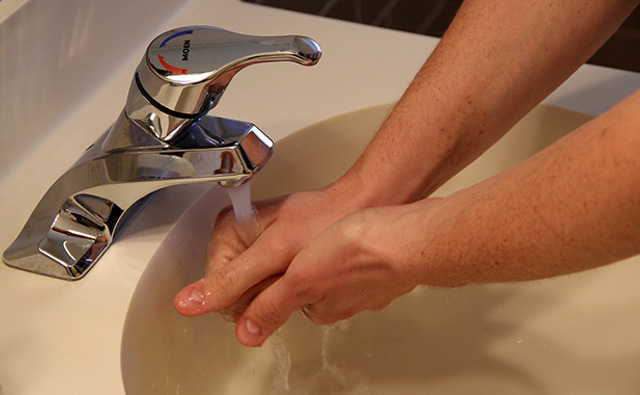Industry News, HI&I Cleaning Care, Legislation
Next Gen Antiseptics

Industry News, HI&I Cleaning Care, Legislation

With the US Food and Drug Administration (FDA) issuing a Final Rule on the safety and effectiveness of over-the-counter (OTC) topical antiseptic products on Sept. 2, 2016, the days are numbered for consumer antiseptic wash products containing one or more of the 19 specific active ingredients, the most common of which are triclosan and triclocarban (see also, “Soap Opera,” in this issue). Per the FDA, triclosan and triclocarban can, “no longer be marketed in the US because the manufacturers did not demonstrate that the ingredients are both safe for long-term daily use and more effective than plain soap and water in preventing illness and the spread of certain infections.”1 Leaving manufacturers one year to comply with the rule by removing these products from the market or reformulating the active ingredients from their products, the impact will be vast and sweeping.
While the rule does not apply to consumer hand sanitizers, wipe-type products, or products used in a healthcare setting, today there are more than 2,0002 OTC antibacterial products on the market containing at least one of the banned ingredients. This ruling leaves marketers and manufacturers alike, scrambling to fill the ever-nearing void on store shelves everywhere. At this point in the conversation, marketers and manufacturers must further evaluate the best course of action in order to participate in this market.
One solution would be to market a product conforming to the final OTC monograph as it relates to active ingredients used in antibacterial wash products. The OTC monograph system, first established in 1972, is an ongoing assessment of safety and efficacy of active ingredients in various therapeutic classes. The Tentative Final Monograph (TFM) for Topical Antimicrobial Drug Products: Consumer Antiseptic was initially established in 1978 (with subsequent additions and revisions up to 2016) and covers seven different uses with proposed, approved active ingredients, doses as well as required warnings and claims for each. This TFM classifies ingredients into three categories:
Selecting a Category III active is a risky business decision now that the FDA has classified the top five most commonly used antibacterials (triclosan, triclocarban, benzalkonium chloride, benzethonium chloride and choroxylenol) as Category IIISE. Two are banned as in the case of triclosan and triclocarban, and the remaining three have been given one year to fill in the data gaps and prove safety and efficacy, as is the case for benzalkonium chloride, benzethonium chloride and choroxylenol.3
OTC products that fall outside of the scope of the monograph are considered “New Drugs,” and are subject to the New Drug Application (NDA) process. The NDA process bears heavy fees and a lengthy approval process, presenting a barrier to entry for most:
| 2016 NDA Application Fees4 | |
| Application w/ Clinical | $2,038,100.00 |
| Application w/o Clinical | $1,019,050.00 |
| Supplement w/ Clinical | $1,019,050.00 |
| Product | $97,750.00 |
| Establishment | $512,200.00 |
However, unlike the OTC process, the NDA approval process requires safety and efficacy data up front. NDA-approved products carry the full marketing approval of the FDA, regardless of future OTC monograph changes, providing assurance that the OTC product is not called into question by the FDA in the foreseeable future.
While the door has been left open for materials such as chloroxylenol, benzalkonium chloride and benzethonium chloride, the cost of safety and efficacy testing is burdensome. In light of the heavy cost to undergo the NDA process, now is the time to consider NDA-carrying and FDA-approved finished goods that are truly ready to market now.
Enter 0.75% chlorhexidine gluconate (CHG) antiseptic handwash, a ready-to-market, FDA-approved, NDA-processed, antibacterial product for consumers that has been proven to be both safe and effective. In fact, chlorhexidine gluconate has been used to treat umbilical cords of newborn babies. In 2014, the government of Nepal received the US Agency for International Development (USAID) Pioneers Prize for reducing the neonatal death rate by 23% by utilizing CHG.5,6 In this turbulent regulatory environment, 0.75% CHG can act as the turn-key solution to protect and expand your product line.
CHG has a long history of use in the healthcare industry as a healthcare personnel hand wash, patient preoperative skin preparation, and even for use as a surgical scrub in the operating room. Unlike triclosan, CHG has repeatedly been clinically proven to reduce bacteria on the skin under FDA rules and regulations. CHG is effective against all 52 different types of bacteria listed in the FDA (2015 TFM) list. This includes all common household bacteria: E. coli, Staph, H1N1, MRSA and many other common bacteria that may cause disease.
In comparison to other antibacterial products on the market, 0.75% CHG hand wash has many benefits:
The opportunity in the market now is to consider the possibilities created by formulations that already have undergone the NDA process—specifically those that include chlorhexidine gluconate. CHG is widely considered to be the gold standard of antiseptics by infection control experts and healthcare professionals alike.